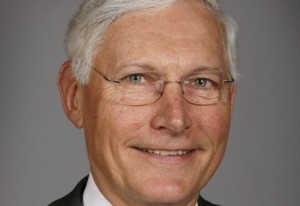Vander Linden Capitol Update for April 23
House Republican Budget Targets
It is important to Iowans that we do not spend more than we have and live within our means. While standing by this principle for the last five legislative sessions, Republicans have found common ground with the Governor and Senate Democrats. We expect that to continue this year. Living within our means is something the hardworking taxpayers of Iowa do every day. Government needs to do the same.
The House Republican budget plan spends 99.9% ($7.168 billion) of on-going revenue ($7.175 billion) ensuring that government does not spend more than it has and lives within its means. This is a 2.48% (173.8 million) increase over FY 15.
Individual line-items in each budget subcommittee area will be determined shortly by each of the appropriate budget subcommittees. This session the House starts Admin & Reg, Education, RIIF, Transportation and Block Grants. The Senate starts Ag & Nat Res, Econ Dev, HHS, Justice and Standings. Standings include Supplemental State Aid.
Partisan rhetoric from legislative Democrats claim the GOP plan will dramatically affect government services in a negative way. It is difficult to argue that a nearly $180 million increase will tie the hands of government agencies and prevent them from fulfilling their responsibilities.
The House Republican budget plan does not use the ending balance, the Cash Reserve or the Economic Emergency Fund. According the non-partisan Legislative Services Agency in regards to the ending balance, “It should be noted that these excess funds are considered one-time revenues that can carry-forward from one fiscal year to the next. The transfer amounts can be unpredictable from one year to the next… Reliance on these revenues for ongoing operational expenses of government programs can result in budget shortfalls if an economic downturn causes a drop in annual tax revenue.”
The Cash Reserve is used to cash flow the state budget. Taking money from it jeopardizes timely payments to school districts and local governments.
The Economic Emergency Fund is used for catastrophic problems such as the floods of 2008.
Senate Democrats’ Budget Proposal
Targets released by Senate Democrats last week spend 102.5% of on-going revenue. Democrats spend more than the state collects and use one-time money for on-going needs. Why is that important?
For the 4 years Democrats controlled both chambers of the Legislature and the Governor’s Office, they spent the following percentages of on-going revenue:
FY 2008 – 102.23%
FY 2009 – 105.52%
FY 2010 – 107.85%
FY 2011 – 111.82%
During the 2010 session (FY 11), Democrats authorized nearly $600 million in spending from the Cash Reserve ($267.4 million) and federal stimulus money ($323.9 million)
By the end of the 2010 session (FY 11), legislative
Democrats authorized nearly 70 loopholes in the current 99% Expenditure Limitation law to allow their spending increases. As they proved then, they only believe in the law when it is convenient for them.
As Governor Culver left office back in 2011, he had forced a $500 million property tax increase, borrowed over $800 million that costs double to pay back and left a $700 million spending gap for the new governor and legislature.
Spending more than the state collects has consequences.
In FY 2012, the legislature approved a budget that spent just 95% of on-going revenue. In FY 2013, it was just 92% of on-going revenue. In FY 2014, it was 99.9%. Then last session the Legislature approved a budget that spent 99.9% of on-going revenue. Then the economy worsened and revenue dropped meaning the state actually spent 103.3% of on-going revenue. To pay for that overrun, the state’s ending balance was tapped. The Senate Democrat’s budget proposal does the same thing this year, spends 102.5% of revenue and taps the ending balance to pay for the overrun. This budgeting course is shortsighted and reminiscent of their haphazard budgeting practices of the past. Instead of assuring certainty, all it guarantees is overspending.
Actual revenue data does not guide the budgeting decisions of Democrats. During the 2013-14 legislative sessions, Democrats in the House sponsored amendments that increased spending by $1.5 billion.
The 2014 session is a good example why the 99% expenditure limitation law is flawed. The law allowed the legislature to spend $7.631 billion. Then the economy worsened and revenue dropped. If the legislature had spent at the 99% expenditure limitation level, the ending balance would be negative $157.4 million.
State Revenue
Projected Ending Balance at the end of FY 2015 on June
30: $420 million
Current Cash Reserve: $522.2 million
Current Economic Emergency Fund: $174.1 million
FY 2015 Revenue Estimate: $6.767 billion
FY 2015 Actual Spending Amount: $6.994 billion
FY 2016 On-Going Revenue Estimate: $7.175 billion FY 2016 New Revenue: $180.9 million (2.6%)
According the non-partisan LSA, actual state revenue growth is 2.6%, not 6%. In actual dollars, growth is $180.9 million, not $408.1 million. According to LSA the $408.1 million figure represents the growth between estimates, not the growth between actual spending and the FY 2016 estimate.
According to the non-partisan LSA, actual state spending last year was $6.995 billion. The new revenue estimate is $7.175 billion. The difference is 2.6% or $180.9 million. It is simple math.
Legislative Democrats insist there is 6% growth, or $408.1 million. They are ignoring actual state spending in doing so. They take the latest estimate on final FY 15 revenue ($6.767 billion) and subtract it from the latest estimate on
FY 16 revenue ($7.175 billion). The difference is 6% or $408.1 million. But those numbers are irrelevant as long as actual spending is higher than the estimate.
The state’s Cash Reserve Fund has $522.2 million. It must equal 7.5% of that year’s budget to help cash flow the state during the year. When the Legislature decided to reform the budget process in the early 1990’s, one of the key elements was ensuring that payments – especially school aid payments – were made in a timely manner.
In the 1980’s, the state did not have a cash reserve fund and payments to schools were not made on time. Schools were forced to borrow money to make payroll as they waited for school aid payments from the state. Schools were forced to incur additional costs because of the state’s lack of fiscal responsibility.
The state does not have a $1 billion surplus. Back in 2013 the state had an ending balance of roughly $900 million. Since then that revenue has been used to pay off state debt and invest in key infrastructure projects in our Regents institutions and improving water quality. The ending balance is estimated to be $420 million at the end of Fiscal Year 2015 on June 30. If that money is spent, there is no automatic source for it to be replenished.
















